Rank Species | Order Vitales Higher classification Parthenocissus | |
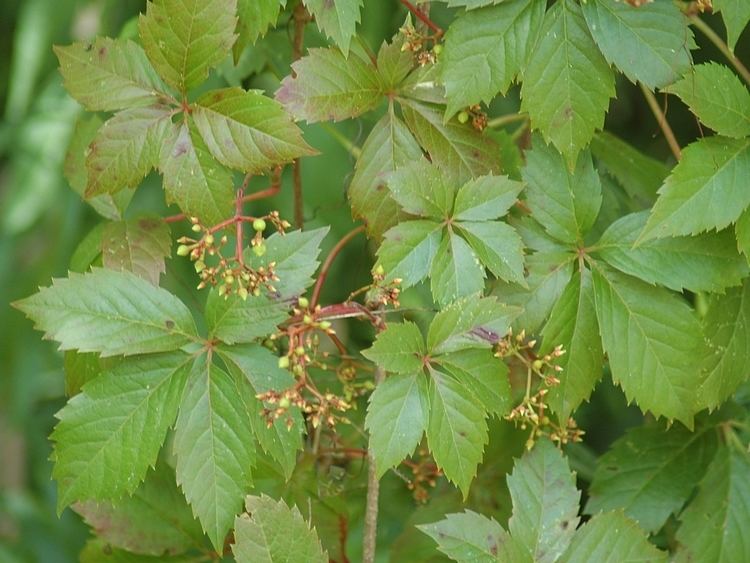 | ||
Scientific name Parthenocissus quinquefolia Similar Parthenocissus, Parthenocissus tricuspidata, Ivy, Ampelopsis, Vitaceae | ||
We have bees on tiny virginia creeper flowers parthenocissus quinquefolia
Parthenocissus quinquefolia, known as Virginia creeper, Victoria creeper, five-leaved ivy, or five-finger, is a species of flowering plant in the grape family, Vitaceae. It is native to eastern and central North America, from southeastern Canada and the eastern United States west to Manitoba and Utah, and south to eastern Mexico and Guatemala.
Contents
- We have bees on tiny virginia creeper flowers parthenocissus quinquefolia
- Parthenocissus quinquefolia
- Names
- Description
- Leaves
- Flowers and berries
- Cultivation and uses
- References
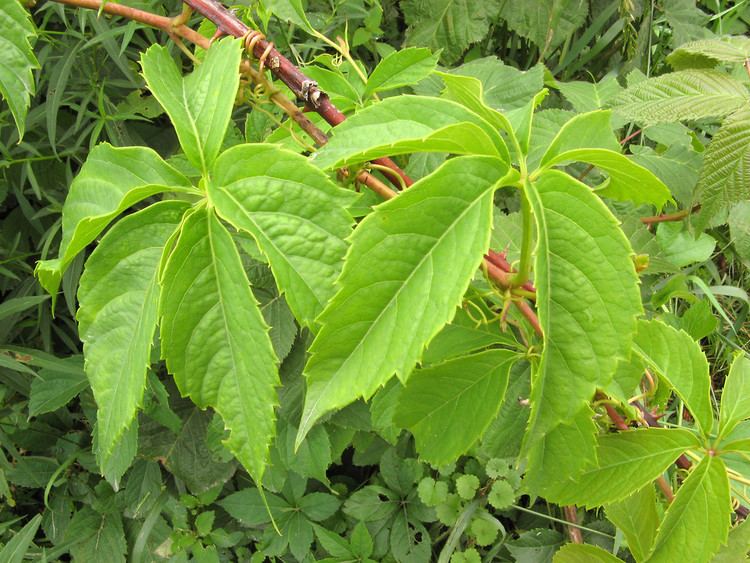
Parthenocissus quinquefolia
Names
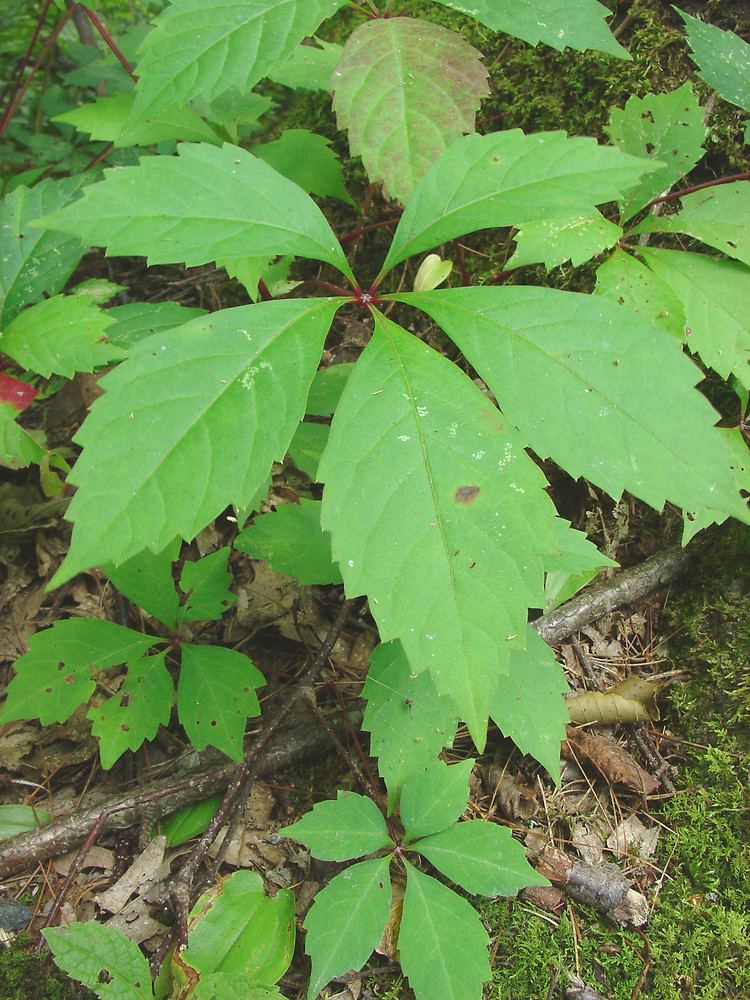
The name "Virginia creeper", referring to one of its native locations, is also used for the whole genus Parthenocissus, and for other species within the genus. The name Parthenocissus is from the Greek literally meaning "virgin ivy", and may derive from the common English name of this species. It is not closely related to the true ivy, Hedera. The specific epithet quinquefolia means "five-leaved", referring to the leaflets on each compound (palmate) leaf.
This plant is also known in North America as woodbine, although woodbine can refer to other plant species.
Description

P. quinquefolia is a prolific deciduous climber, reaching heights of 20–30 m (66–98 ft) in the wild. It climbs smooth surfaces using small forked tendrils tipped with small strongly adhesive pads 5 mm (0.20 in) in size.
Leaves
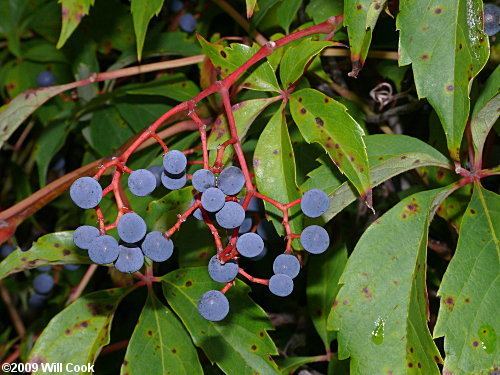
The leaves are palmately compound, composed of five leaflets (rarely three leaflets, particularly on younger vines) joined from a central point on the leafstalk, and range from 3 to 20 cm (1.2 to 7.9 in) (rarely to 30 cm [12 in]) across. The leaflets have a toothed margin. The species is often confused with P. vitacea or "False Virginia creeper", which has the same leaves, but does not have the adhesive pads at the end of its tendrils.

It is sometimes mistaken for Toxicodendron radicans (poison ivy), despite having five leaflets (poison ivy has three). While the leaves of P. quinquefolia do not produce urushiol, the sap within the leaves and stem contains raphides (needle-shaped crystals of calcium oxalate) which can puncture the skin causing irritation and blisters in sensitive people. .
The leaves sometimes turn a decorative bright red in the fall.
Flowers and berries
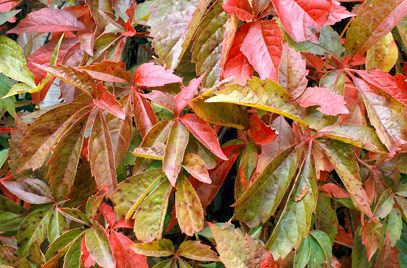
The flowers are small and greenish, produced in inconspicuous clusters in late spring, and mature in late summer or early fall into small hard purplish-black berries 5 to 7 mm (0.20 to 0.28 in) diameter. These berries contain toxic amounts of oxalic acid and have been known to cause kidney damage and death to humans. The berries are not toxic to birds and provide an important winter food source for many bird species.
Cultivation and uses
P. quinquefolia is grown as an ornamental plant, because of its ability to rapidly cover walls and buildings, and its deep red to burgundy fall (autumn) foliage.
It is frequently seen covering telephone poles or trees. It may kill vegetation it covers by shading its support and thus limiting the supporting plants' ability to photosynthesize.
P. quinquefolia can be used as a shading vine for buildings on masonry walls. Because the vine, like its relative P. tricuspidata (Boston ivy), adheres to the surface by disks rather than penetrating roots, it does not harm the masonry but will keep a building cooler by shading the wall surface during the summer. As with ivy, trying to rip the plant from the wall will damage the surface; but if the plant is first killed, such as by severing the vine from the root, the adhesive pads will eventually deteriorate and release their grip.
